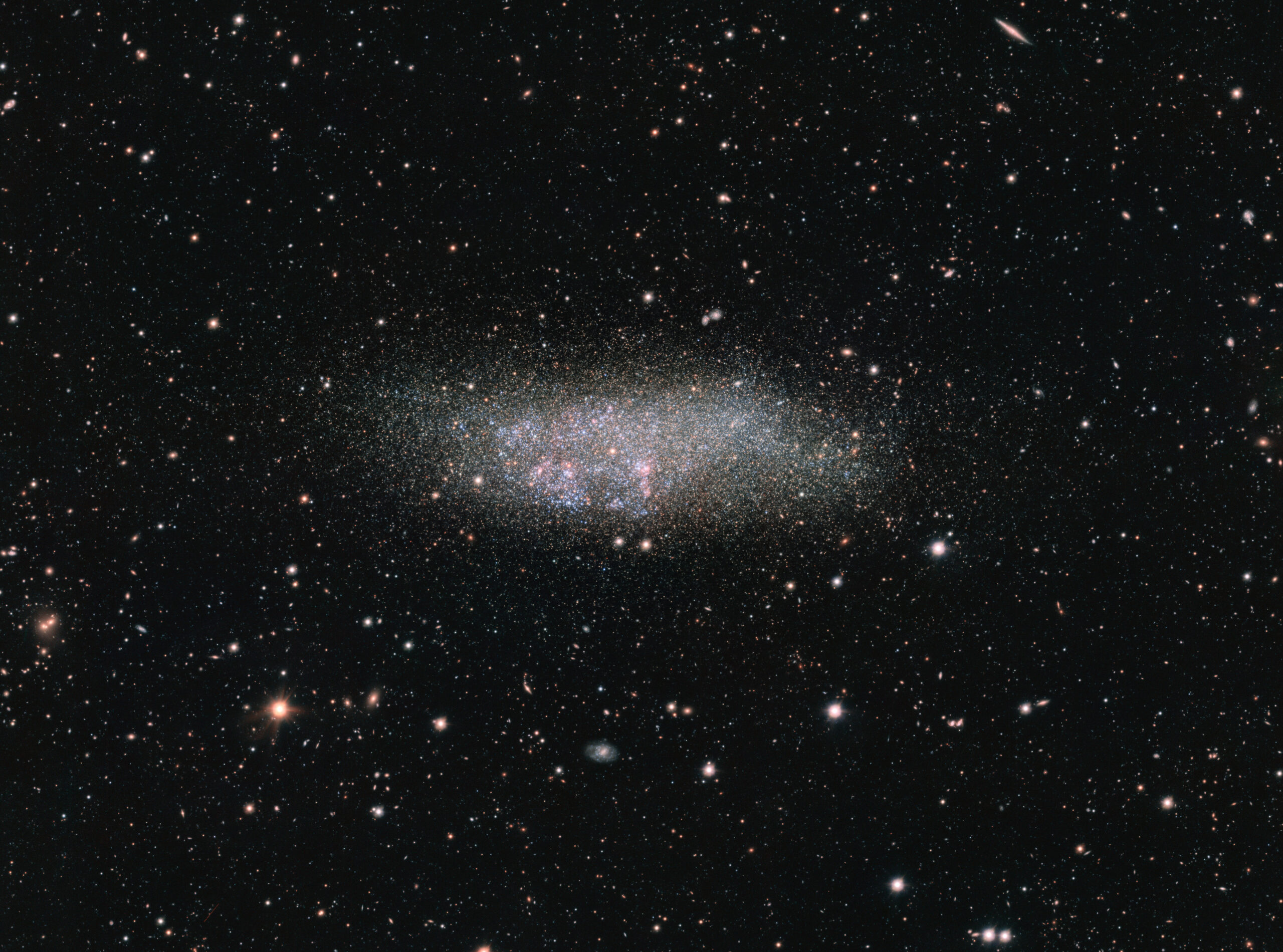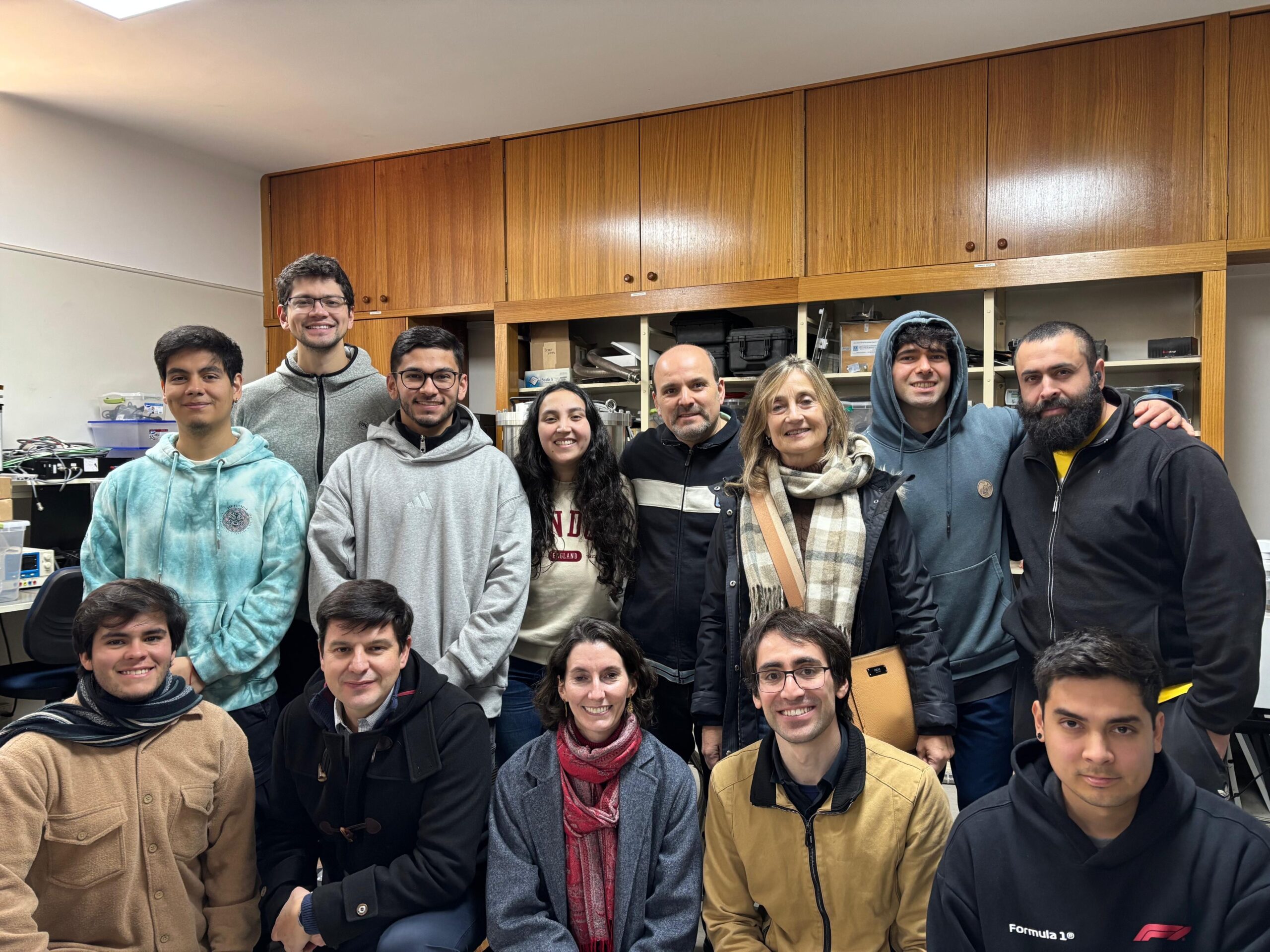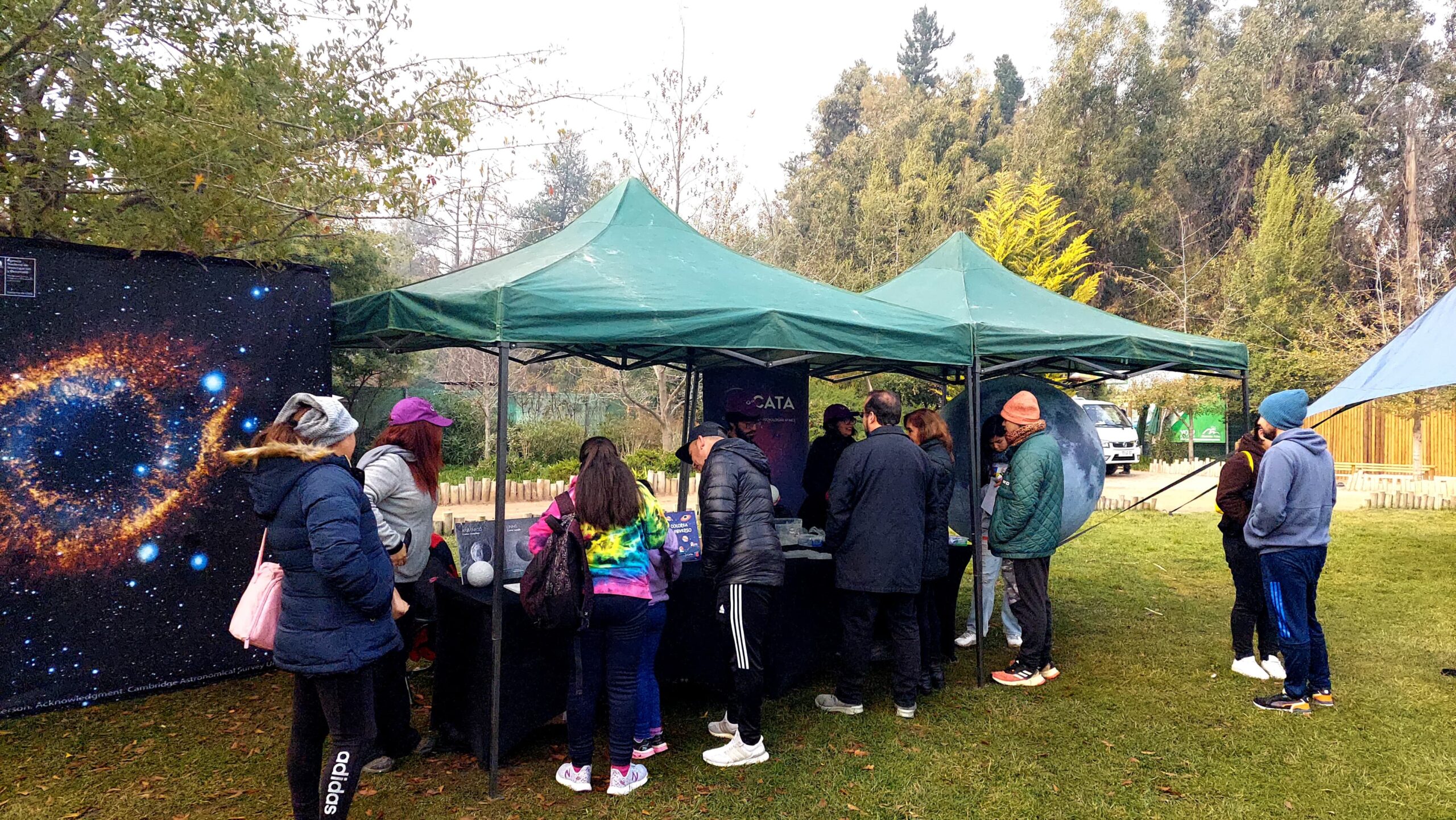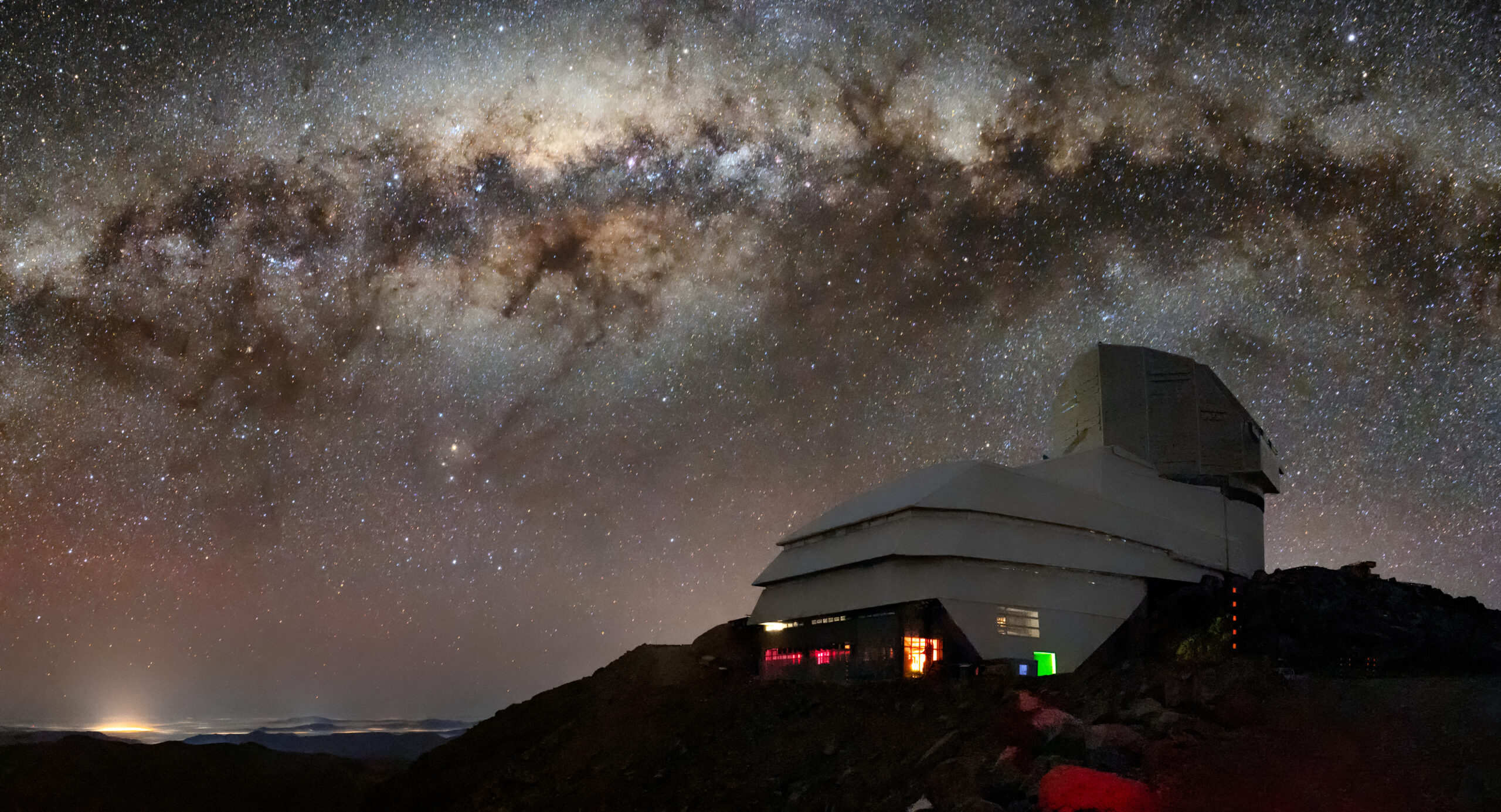
What is the significance of the discovery of twelve pregnant stars in the WLM galaxy?
The twelve stars found are located about 3 million light-years from Earth.
An international team of astronomers, led by Venu Kalari of the Gemini-South Observatory and integrated by the 2021 National Exact Sciences Award, Mónica Rubio, Associate Researcher at the Center for Astrophysics and Related Technologies (CATA) and professor at the University of Chile, identified twelve new stars in formation in the Wolf-Lundmark-Melotte (WLM) dwarf galaxy, located approximately three million light-years from Earth. This finding provides a unique insight into the evolution of the first generations of stars in the early universe.
The study was made possible by observations made with the James Webb Space Telescope (JWST). These stars are less than 10 million years old and are candidates for the pre-main-sequence phase (PMS), i.e., they have not yet begun hydrogen fusion in their core, and are found in a compact cluster 30 light-years wide within an active star-forming region.
The researchers also detected the presence of gas in its surroundings, a key factor in understanding the process of stellar birth. This discovery allows to broaden the knowledge about the differences in star formation in different periods of cosmic history and in comparison with the Milky Way. The detection of gas is key, as it allows us to analyze the conditions under which these stars are forming, which provides relevant data on the evolution of dwarf galaxies and their impact on the early universe.
The regions where these stars were found have significantly low abundances of carbon and other metals, with less than one-fifth the amount present in young stars in the Milky Way. This aspect is fundamental, as it reflects conditions similar to those in the early universe, when the first generations of stars formed in a virtually metal-free environment. The low metallicity of these stars suggests that they may evolve differently from stars formed in environments richer in heavy elements, affecting their composition and the formation of planets around them.
“Thanks to technological advances that have allowed us to gain in sensitivity of the instruments that operate in millimeter radio waves, today we can detect CO in these regions of low metallicity galaxies. It took about 30 years to lower the barrier of 20% metallicity and that was our first great result in 2013 and 2015,” said the U. de Chile researcher.
The study highlights the observational power of the JSWT, which makes it possible to analyze the evolution of stars in extreme environments with unprecedented precision. “This new discovery shows us the power of the James Webb Space Telescope to study the enigmatic process of star formation, in this case in very extreme conditions, similar to those found at the beginning of the Universe, shortly after the Big Bang. It is thanks to the enormous technological developments present in this telescope, which is available to groups of researchers from all over the world including Chile, that these new observations, which require unparalleled sensitivity and sharpness, are now possible”, commented Ezequiel Treister, Director of the Center for Astrophysics and Related Technologies (CATA).
Innovation development for the next steps
With this discovery, new research on the early universe and galaxies with low metallicity is expected to be boosted. The researcher also commented that until now, the farthest young stars in formation had been found was in the Small Magellanic Cloud, about 200,000 light-years away, with a carbon and oxygen content of 20% compared to the Sun. For its part, Mónica Rubio’s team will continue to focus its research within the same galaxy: “We will investigate other areas in the same WLM galaxy. At the same time we are observing with ALMA other low-metallicity galaxies to determine where there are molecular regions that can form stars,” said the astronomer.
Likewise, the National Science Prize winner emphasized the importance of developing innovation for the future of astronomical research of this caliber: “Although the potential of the JWST telescope is unique for its ability to observe in the far infrared, its life is limited, so new technological developments are being made for a possible replacement in the future. It is also essential to build larger radio telescopes or increase the sensitivity capabilities of ALMA’s receivers,” he said.
These results not only provide information about the origin of stellar systems, but also provide clues about the chemical evolution of the universe. As research continues, more stellar systems in even more distant and unknown regions are expected to be identified as astronomical instrument innovation advances.
Recent news
-
 Publicado el: 09/07/2025Patricia Tissera is recognized as full professor by the Pontificia Universidad Católica de Chile
Publicado el: 09/07/2025Patricia Tissera is recognized as full professor by the Pontificia Universidad Católica de Chile -
 Publicado el: 04/07/2025CATA researchers among the best in Chile according to international ranking Research.com
Publicado el: 04/07/2025CATA researchers among the best in Chile according to international ranking Research.com -
 Publicado el: 30/06/2025CATA Director strengthens ties in her second institutional tour
Publicado el: 30/06/2025CATA Director strengthens ties in her second institutional tour -
 Publicado el: 30/06/2025CATA celebrated Asteroid Day 2025 at the Pueblito de Las Vizcachas Park
Publicado el: 30/06/2025CATA celebrated Asteroid Day 2025 at the Pueblito de Las Vizcachas Park -
 Publicado el: 26/06/2025Vera C. Rubin: the telescope that watches the sky and anticipates the future of astronomy
Publicado el: 26/06/2025Vera C. Rubin: the telescope that watches the sky and anticipates the future of astronomy
Categories list
- Acknowledgments 20
- Astrobiology 5
- AstroCluster 1
- Black holes 13
- Corporativo 49
- Cosmology 4
- Descubrimientos 19
- Disclosure 46
- Exoplanets 13
- Extension 4
- Galaxies 17
- Galaxies formation 2
- Inter y Transdisciplina 2
- Local Universe 13
- Publications 5
- Sin categorizar 31
- Solar System 11
- Stellar formation 6
- Technology 9
- Technology Transfer 12

